When choosing the best fabric for duvet covers, you might wonder if it really matters. The truth is that the right textile can significantly impact both comfort and style in your bedroom.
Natural fibers like cotton and linen are celebrated for their breathability. But you might find flannel's warmth more appealing during chilly months. If luxury is your goal, silk might be the fabric you'd consider.
With so many options available, how do you decide which is best for you? Let's explore what each fabric offers and uncover the perfect match for your needs.
Key Takeaways
- Cotton offers breathability and comfort, making it suitable for all seasons.
- Linen is durable and moisture-wicking, ideal for warm climates.
- Bamboo is eco-friendly and hypoallergenic, with excellent temperature regulation.
- Silk provides a luxurious texture and is naturally hypoallergenic.
- Cotton-polyester blends combine breathability and durability at an affordable price.
Factors to Consider When Choosing Duvet Cover Material
To find the best duvet cover material, consider these four main factors with care.
Climate and Temperature
Imagine sinking into a duvet cover that perfectly complements your climate.
For hot climates, opt for a breathable duvet cover made from cotton or linen to enhance airflow.
Hot sleepers should look for moisture-wicking materials such as TENCEL™ Lyocell or bamboo. These help regulate body temperature and prevent overheating.
In colder temperatures, a flannel or cotton sateen duvet cover is ideal. Their tight weaves trap heat and provide insulation.
Cotton percale offers a versatile solution for those living in areas with fluctuating temperatures.
Your choice significantly impacts your sleeping experience, so choose wisely.
Allergies and Sensitivities
Those with allergies or sensitivities should focus on the suitable fabric for their duvet covers.
Opt for hypoallergenic materials like bamboo or TENCEL™ Lyocell. They can resist dust mites and allergens.
Avoid synthetic materials, which might trap heat and moisture, irritating sensitive skin or respiratory conditions.
Additionally, look for fabrics that are Oeko-Tex certified. This will ensure they're free from harmful substances and chemicals.
Care and Maintenance
Choosing the right duvet cover material involves considering how you'll care for and maintain it.
Look at washability. Some fabrics need delicate handling or special washing techniques.
Consider the potential for pilling, which is common in blended fabrics. This can impact the look and feel over time.
Check for wrinkle resistance. Microfiber tends to resist wrinkles better than linen.
Prioritizing these factors ensures your duvet cover remains comfortable and looks great for longer.
Budget
When you're on a budget, it's important to weigh your options between cost and quality.
Cotton blends are a smart choice, offering a balance of softness, breathability, and affordability.
If you want something even more budget-friendly, polyester-cotton blends provide durability and easy care. But they mightn't feel as natural as 100% cotton.
Best Fabric for Duvet Covers: 10 Popular Options
Now, let's take a look at this material guide with the ten best options. Choose wisely to ensure a comfortable sleeping experience.
1. Cotton
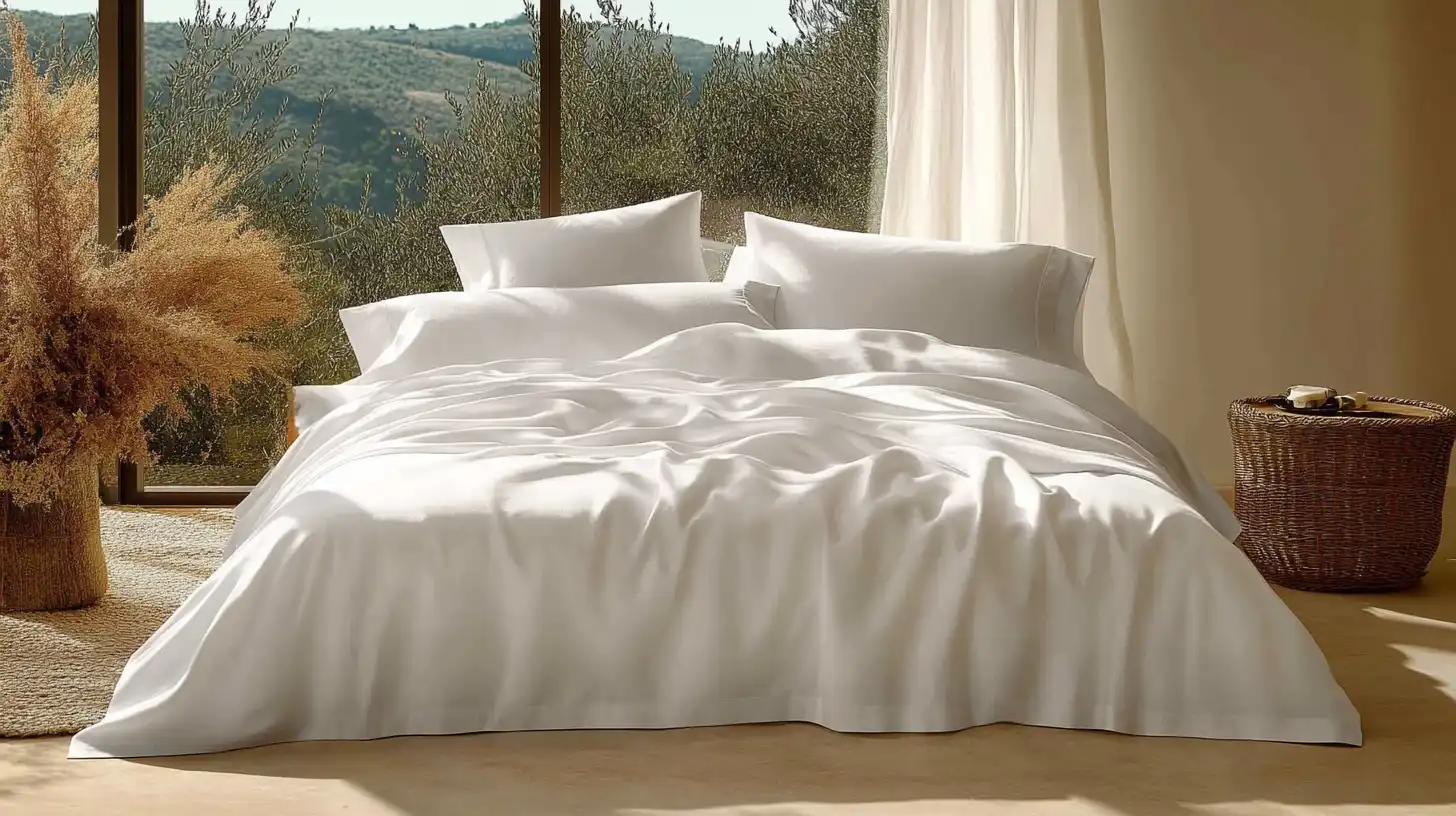
Cotton fabric is one of the most favored fabrics for duvet covers. This is because of its natural breathability, moisture absorption, and remarkable softness.
Types of cotton duvet covers:
- Percale fabric: A percale duvet cover has a crisp, cool texture with a matte finish.
- Cotton sateen: It features a silky, smooth surface and feels gentle against your skin.
- Egyptian cotton: As one of the softest materials, it has exceptional durability and breathability.
Thread counts in cotton:
- Higher thread counts generally mean a softer, more luxurious feel, increased warmth, and better durability.
2. Linen
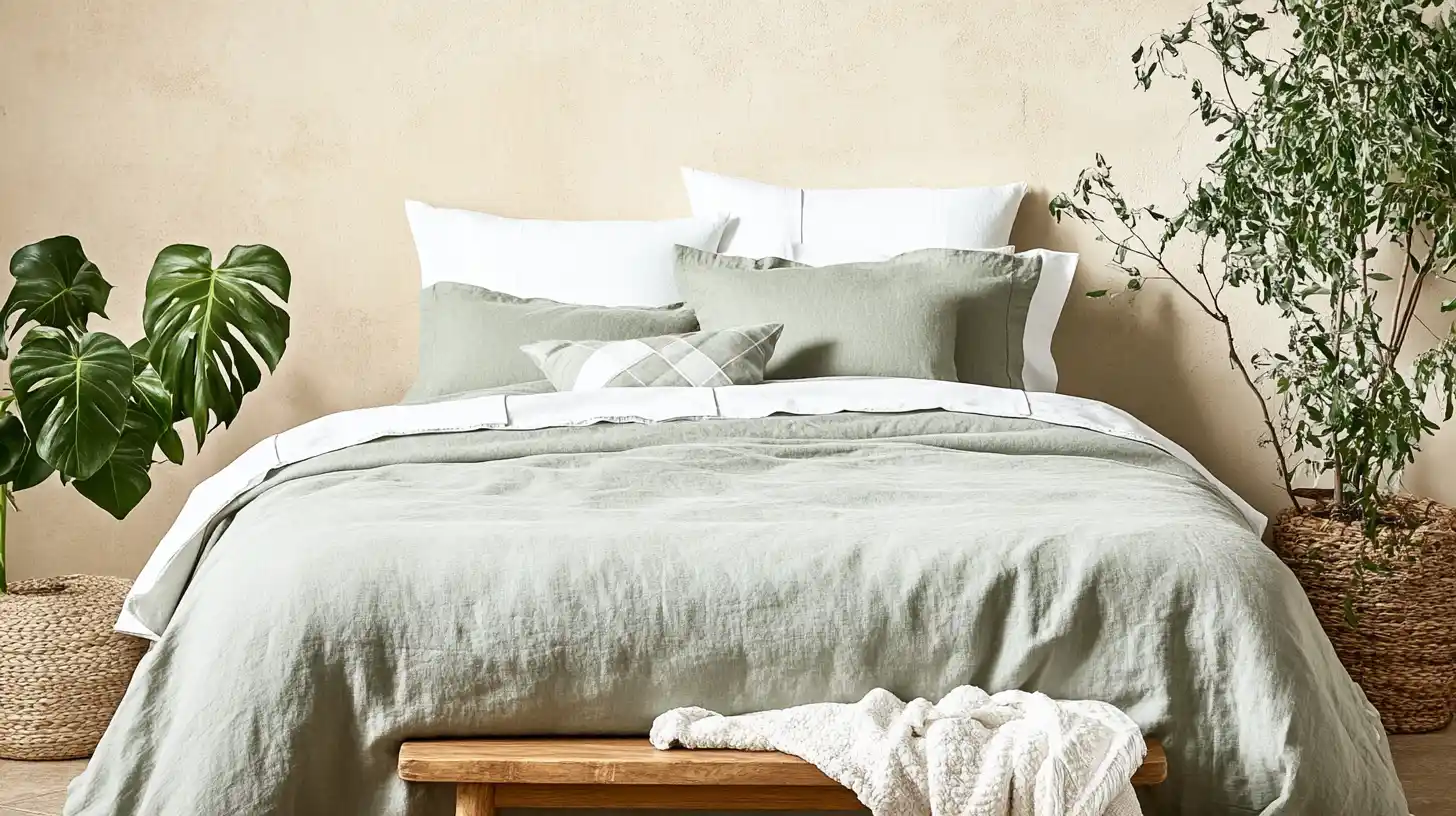
Among the various textiles for duvet covers, linen stands out with its natural, rustic charm and exceptional breathability.
Pros of linen duvet covers:
- Ideal for warm climates and hot sleepers due to their moisture-wicking properties.
- Highly durable and becomes softer with each wash, maintaining strength and longevity.
- Naturally resistant to dust mites and mold, making linen great for those with allergies or sensitive skin.
Cons of linen bedding:
- Although the slightly wrinkled appearance adds a relaxed aesthetic, the coarseness may be less appealing than softer materials.
3. Silk
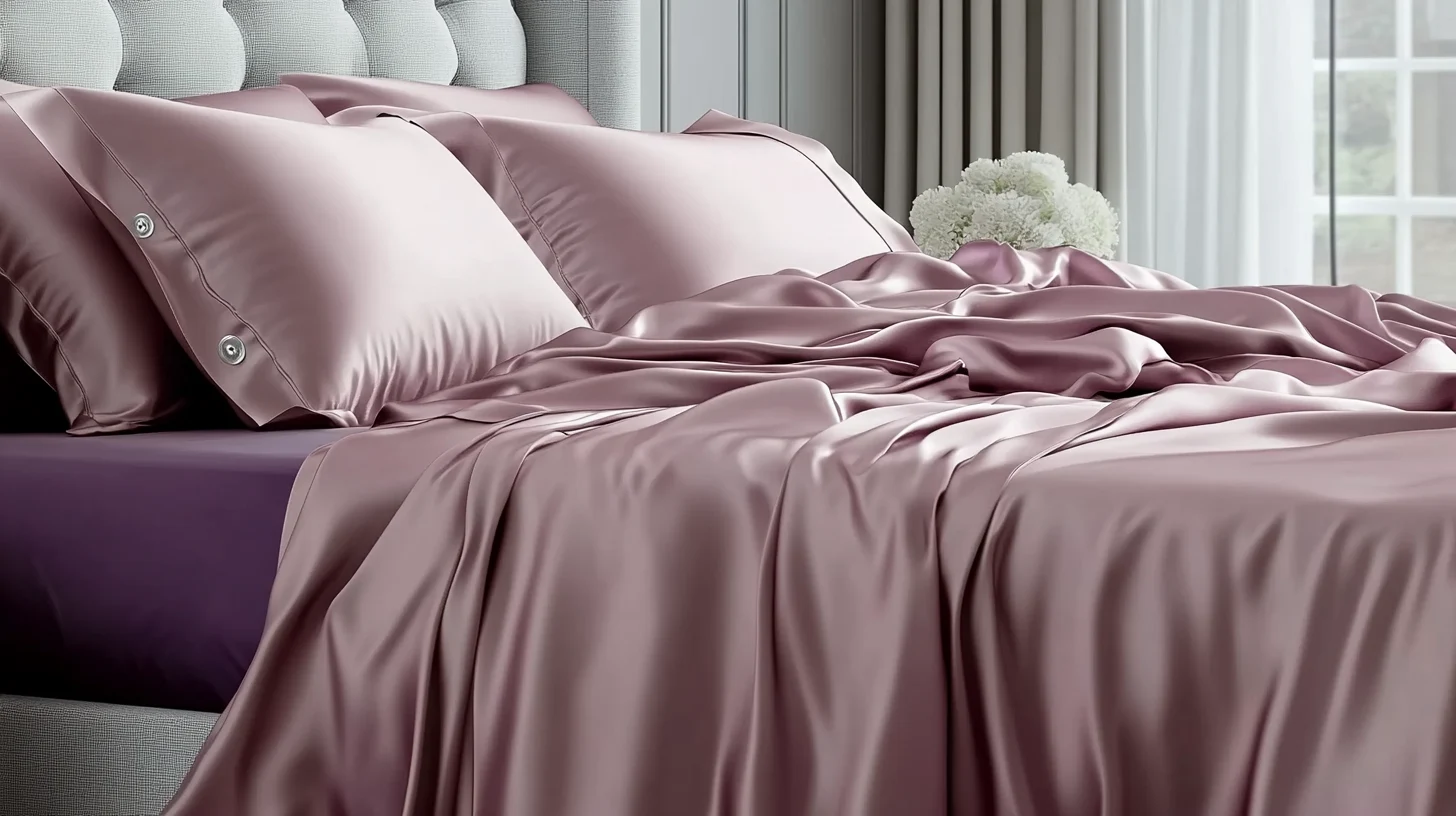
If you're looking for a material that exudes a luxurious texture, silk might be your perfect match.
Pros of silk duvet covers:
- It has a natural sheen that adds elegance to your bedding.
- Silk provides exceptional temperature regulation, keeping you warm in winter and cool in summer.
- It's naturally hypoallergenic, making it ideal for allergy sufferers.
Cons of silk duvet covers:
- It requires gentle care and often needs dry cleaning or delicate washing.
- Generally, it comes with a higher price point.
4. Satin

Satin stands out with its smooth texture and glossy finish. Its soft texture makes it a delight to sleep under. However, satin still has some drawbacks you should consider:
- It's not the most breathable, which can cause overheating.
- The fabric is slippery, and extra ties or fasteners may be needed for the duvet insert.
- It requires gentle washing to maintain luster, which makes frequent laundering less practical.
5. Bamboo

Thanks to its unique properties, bamboo fabric has become a popular choice.
- Moisture-wicking: Keeps you cool and dry throughout the night.
- Naturally Hypoallergenic: Ideal for individuals with sensitive skin or allergies.
- Silky-smooth texture: Feels luxurious and enhances comfort.
- Environmentally friendly: Bamboo is a sustainable option.
- Durability: Maintains softness and quality even after multiple washes.
6. Polyester
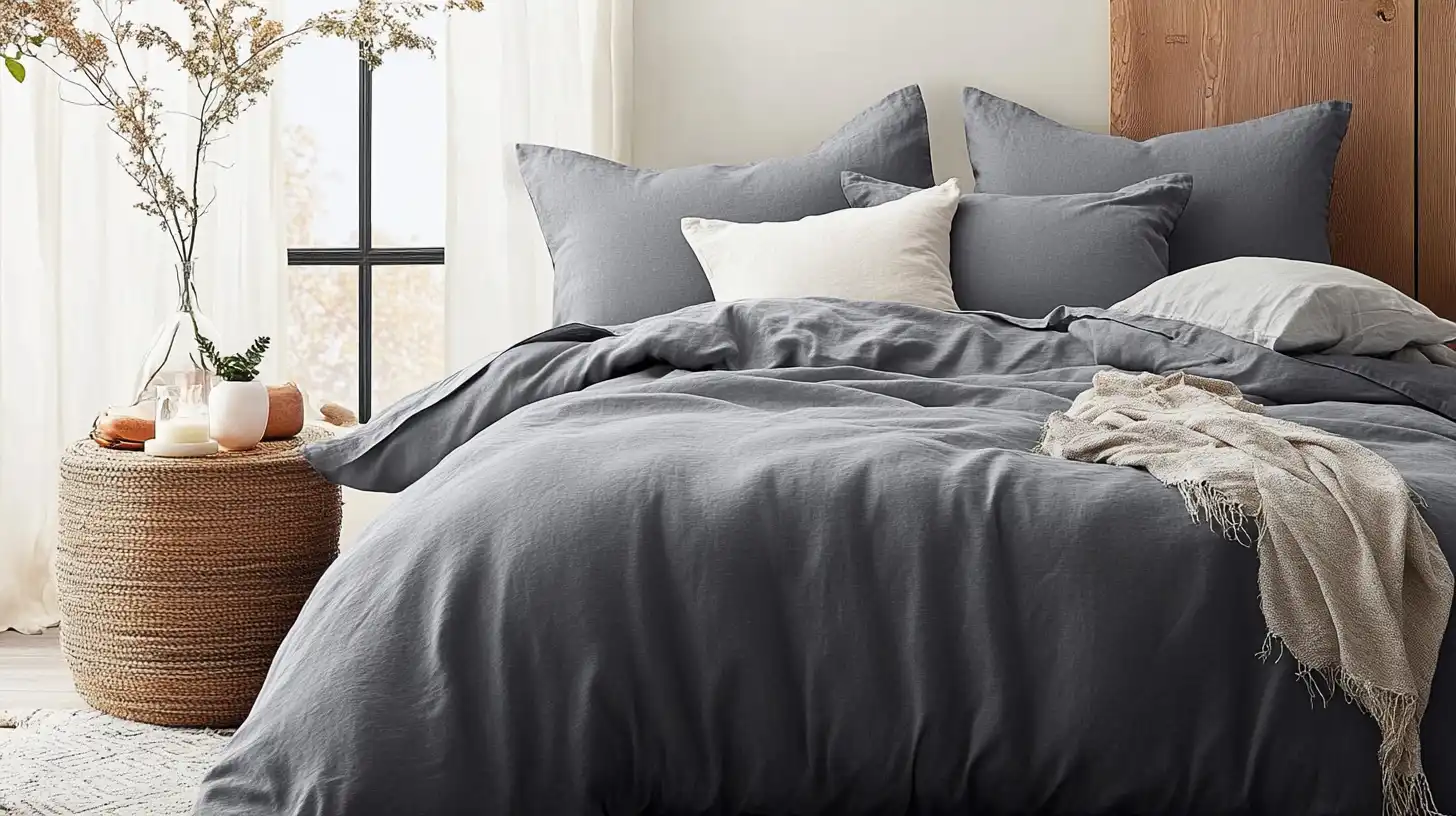
Versatility defines polyester when it comes to duvet covers. It's a wise choice if you're looking for affordability and durability.
Pros of polyester duvet covers:
- Budget-friendly.
- Generally soft and easy to maintain.
- Resilient to wear and tear, ideal for daily use.
- Moisture-wicking ability to manage sweat and keep you comfortable.
Cons of polyester duvet covers:
- May lack breathability compared to natural fibers.
- Potential for overheating in some sleepers.
7. Microfiber
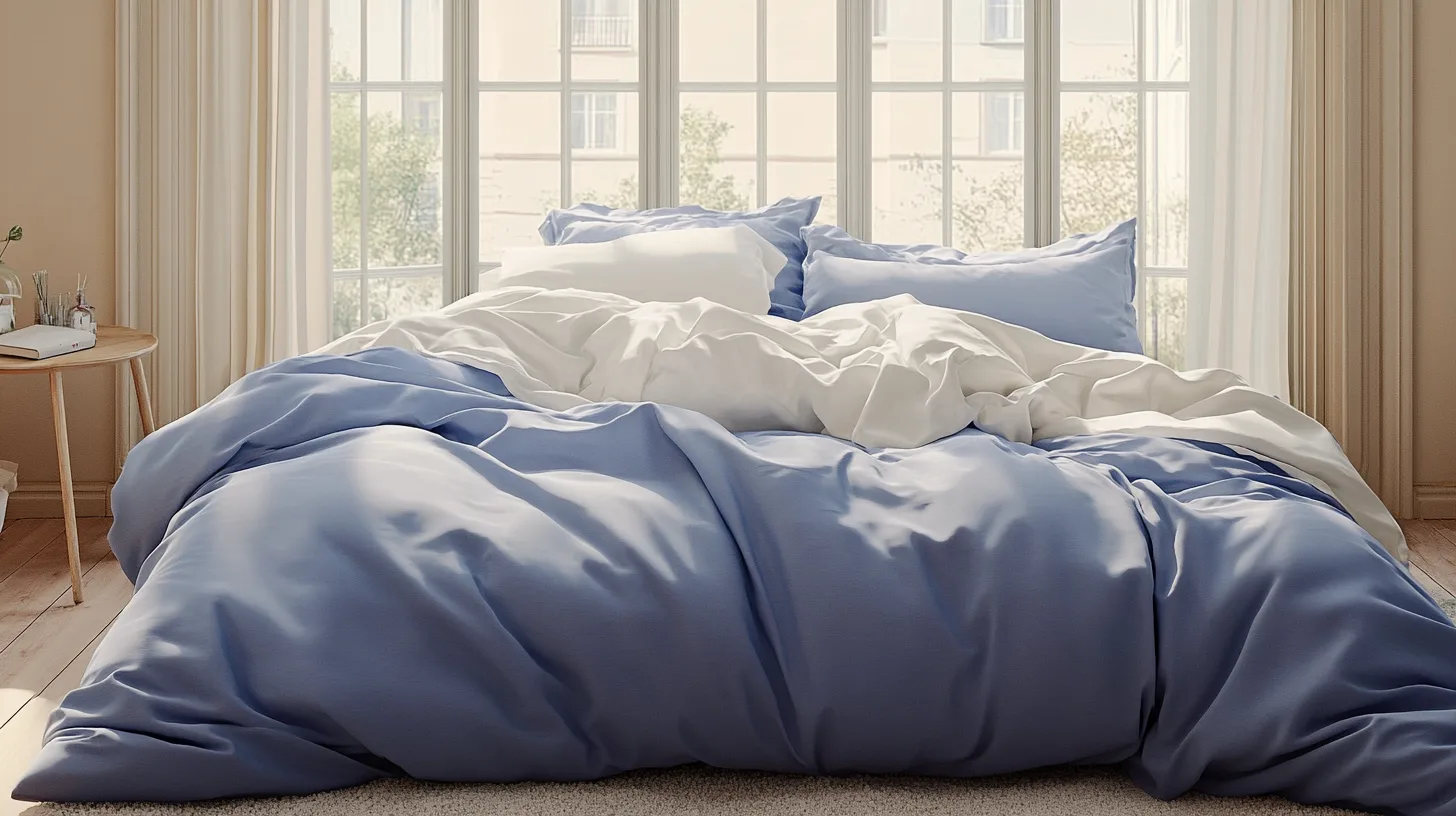
If you're exploring options beyond polyester, consider microfiber for your duvet covers.
Pros of microfiber duvet covers:
- Made from finely woven polyester fibers, microfiber offers exceptional softness and smooth texture, similar to luxurious fabrics like silk.
- It's hypoallergenic and ideal for those with allergies.
- Lightweight and breathable, it's suitable for various climates.
- It's easy to maintain and highly resistant to wrinkles, stains, and fading.
Cons of microfiber duvet covers:
- It's more affordable but may lack long-term durability and breathability.
- Potentially, it could lead to overheating for some sleepers.
8. Blended Fabrics
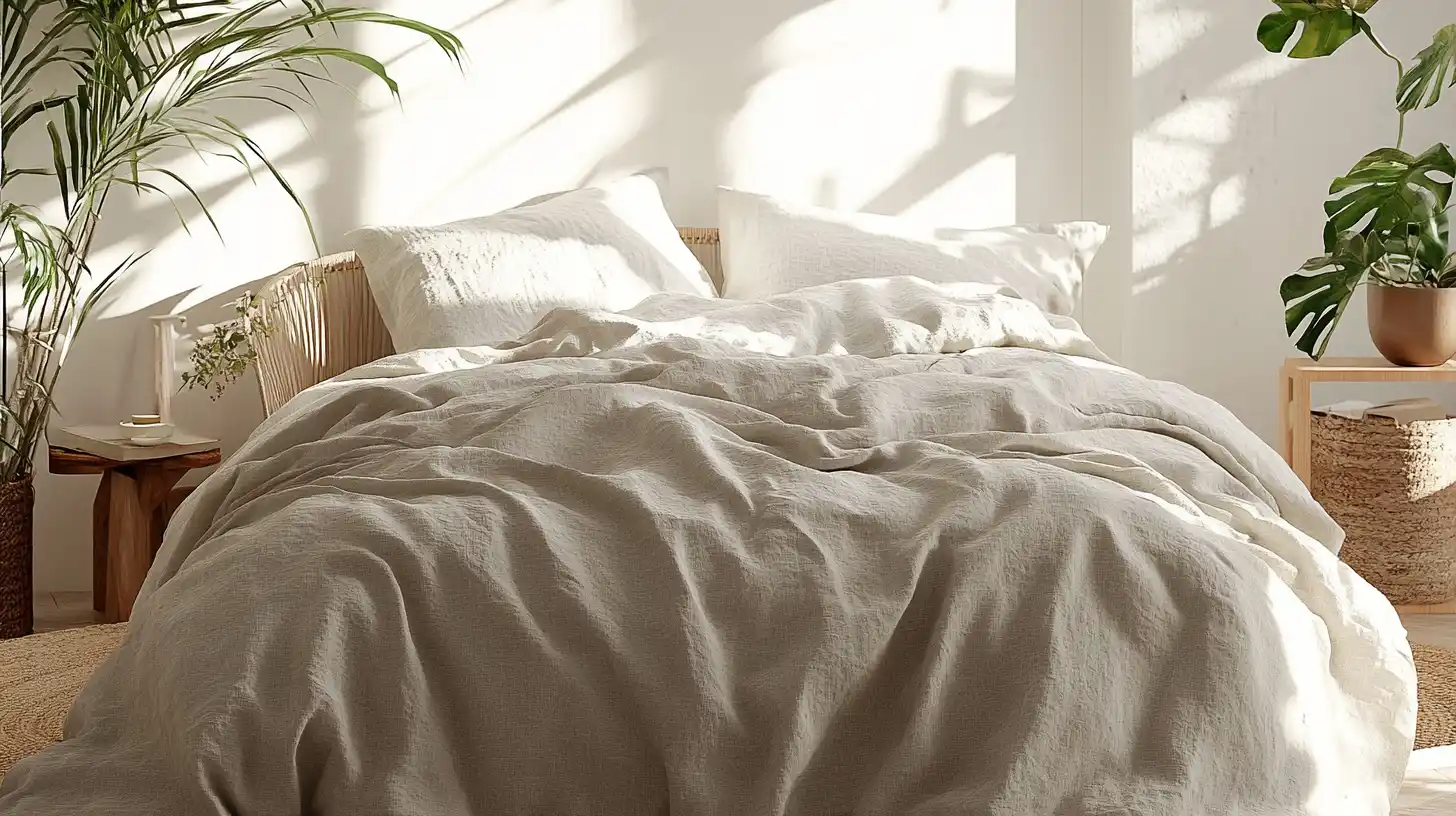
Blended fabrics offer an excellent balance of comfort and practicality for duvet covers.
- Cotton-Polyester Blend: Soft, durable, and wrinkle-resistant.
- Cotton-Linen Blend: Breathable, cool, and has a natural texture.
- Bamboo-Cotton Blend: Hypoallergenic, moisture-wicking, and eco-friendly.
- Cotton-Satin Blend: Silky smooth finish, luxurious feel, and easy to maintain.
- Microfiber-Blends: Lightweight, affordable, and quick-drying.
9. Flannel

Flannel takes the spotlight when warmth is your top priority. Flannel bedding is typically crafted from cotton, wool, or synthetic fibers.
Pros of Flannel Duvet Covers:
- Exceptional Warmth: Ideal for chilly nights and cold sleepers.
- Soft Brushed Texture: Comfortable and cozy feel.
- Effective Heat Trapping: Tightly woven fibers retain body heat.
Cons of Flannel Duvet Covers:
- Potential Overheating: May be too warm for milder climates or warmer months.
- Care Requirements: Requires regular washing to maintain softness and minimize pilling.
- Preservation: Must follow proper care instructions to preserve the quality.
10. Tencel (Lyocell)
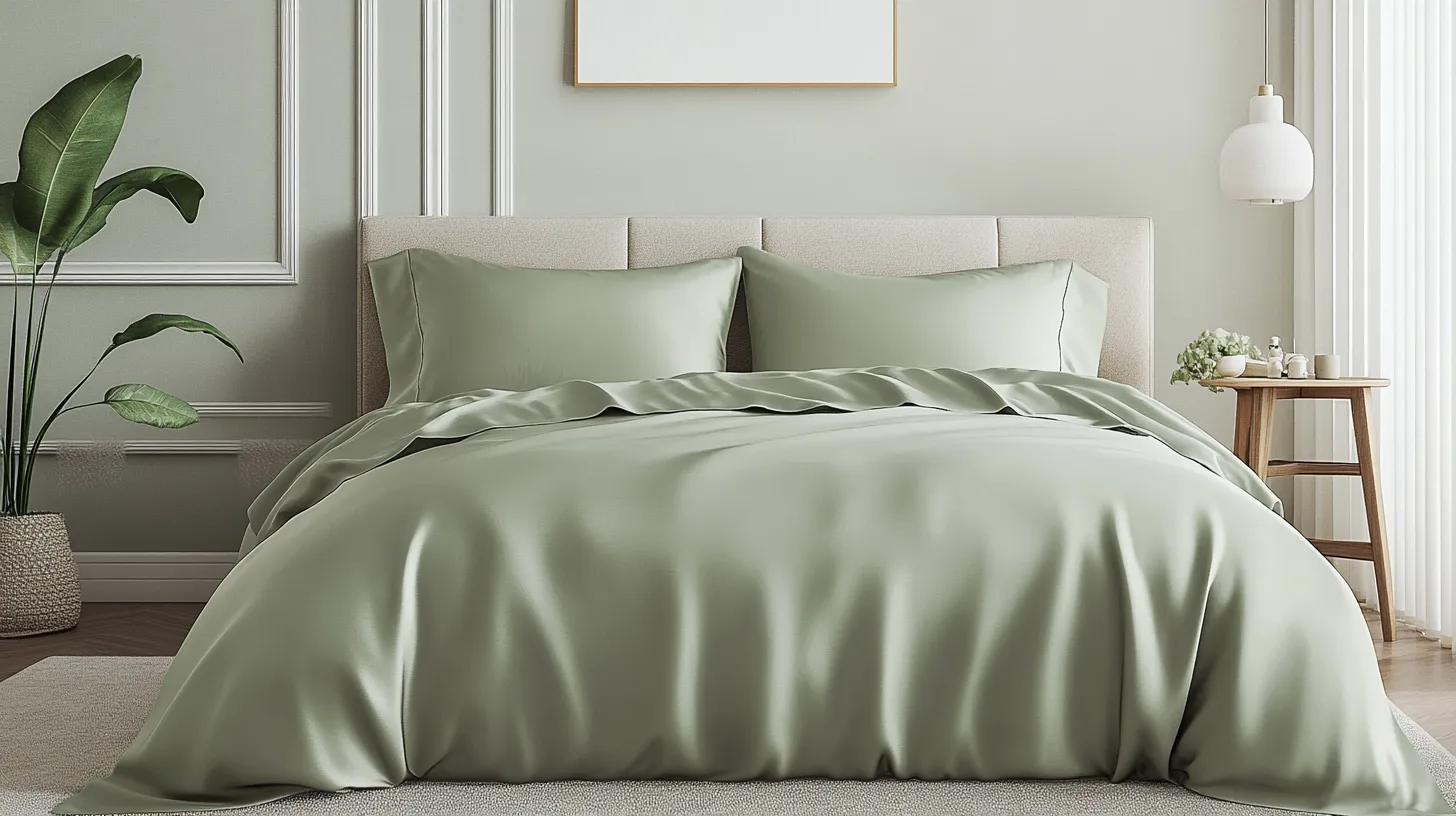
TENCEL™ Lyocell material is a standout choice for duvet covers. It comes with various benefits for you:
- Made from sustainably sourced wood pulp, TENCEL™ Lyocell is a luxurious and sustainable choice.
- Exceptionally smooth and soft, it provides a luxurious feel against your skin.
- Highly breathable and moisture-wicking, it effectively regulates temperature.
- Hypoallergenic, it's suitable for sensitive skin or allergies.
- It's durable and retains quality and aesthetic appeal even after multiple washes.
- The closed-loop production process recycles water and solvents, minimizing environmental impact.
How to Make Your DIY Duvet Cover
Creating your DIY duvet cover can be rewarding, combining practicality with personal style.
- First, select a material that suits your comfort needs—cotton for breathability or flannel for warmth, depending on the season.
- Before sewing, pre-wash your fabric to prevent shrinkage and set any dyes.
- Next, accurately measure your duvet insert, allowing an extra inch for seams.
- Consider adding inner ties or loops at the corners to keep the duvet insert from shifting.
- Use a sewing machine to craft a simple envelope-style closure or incorporate buttons or ties for a polished finish.
With these steps, you can create a customized duvet cover that is both functional and reflective of your unique style.
Conclusion
When choosing a duvet cover fabric, focus on comfort, climate, and personal style. Natural fibers like cotton and linen offer breathability, while flannel keeps you warm in colder weather. Silk adds a touch of luxury. Bamboo and TENCEL™ Lyocell are perfect for sensitive skin.
Selecting the appropriate material will enhance your sleep quality and elevate your bedroom's aesthetic. So, choose one that suits your needs and enjoy a restful night!
Learn more fabric knowledge on the Longan Craft Blog, and dive into the fabric world with Longancraft!
FAQs
What Is the Best Fabric for a Duvet Cover?
You should choose a material that matches your comfort needs and lifestyle. Cotton offers softness and breathability, while linen provides durability. Consider blends for easy maintenance. Ultimately, pick what best enhances your sleep and suits your style.
What Is the Most Breathable Fabric for a Duvet Cover?
Choose 100% cotton, especially percale, for its airflow and moisture absorption. Linen and bamboo are also great for staying cool. Opt for lower thread counts to maximize breathability.
What Is the Best Material for a Duvet?
You'll want to choose a material that balances comfort, durability, and style. Cotton offers breathability, while silk provides luxury. Linen keeps you cool, and TENCEL™ is hypoallergenic. Consider what's most important for your sleeping experience.
Is It Better to Have a Cotton or Polyester Duvet Cover?
You should choose cotton if you prioritize softness, breathability, and comfort, especially if you have sensitive skin. Opt for polyester if you want durability and low maintenance. Consider blends for a balanced option that combines both benefits.


0 comments